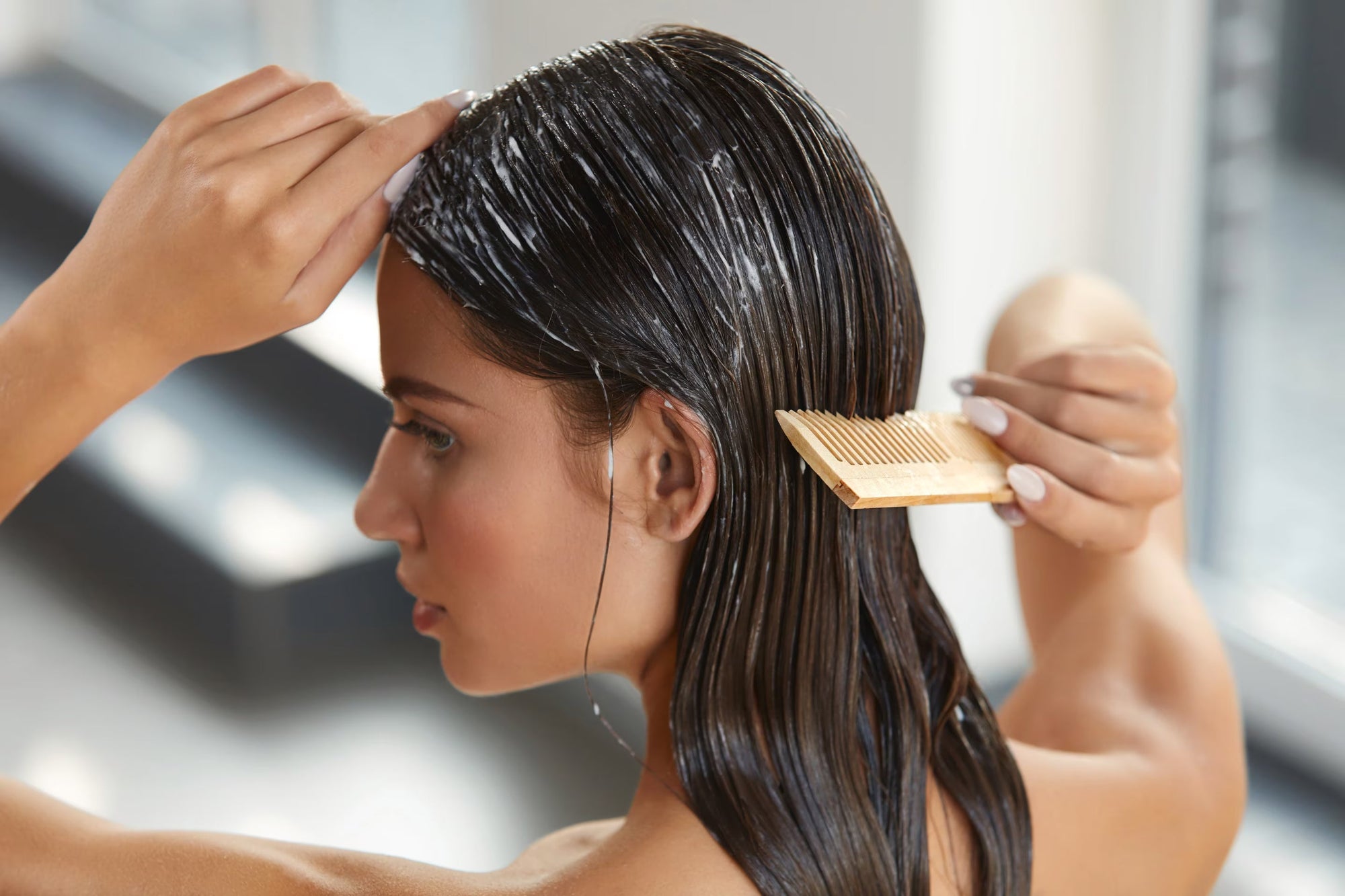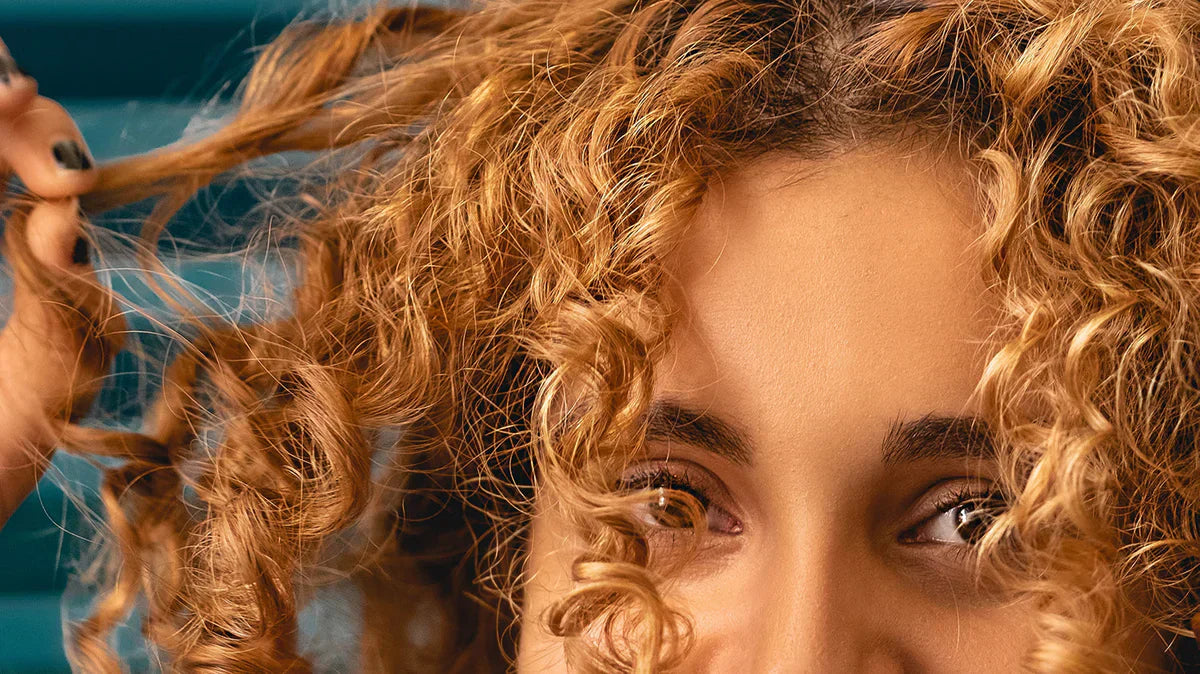You know that soft, silky feeling after deep conditioning? It’s perfect for a while, then somehow it disappears. A few hours later, your hair looks dull again. It’s not the conditioner’s fault - it’s just how hair behaves when moisture isn’t sealed in.
Deep conditioning fills your strands with hydration, but sealing is what helps them hold on to it. Without that final layer, the moisture you worked so hard to add simply escapes. Sealing isn’t fancy or complicated. It’s a few simple habits that make all the difference.
If you’re also building a full weekly plan, check the Hair Care Routine Guide for extra help.
Why Sealing Actually Matters
Hair loses moisture faster than you think. Heat, towel friction, mineral buildup - everything slowly pulls hydration out. Even air conditioning or sunlight can strip it away.
Think of deep conditioning as pouring water into dry soil. If you don’t cover it, it’ll dry up by morning. That’s how hair works too. Sealing gives that “cover,” keeping everything inside. When done right, your hair stays softer, shinier, and easier to manage for days.
Start with Cool Water
When you rinse your conditioner, don’t use hot water. It feels nice, but it leaves the cuticles open, and open cuticles let moisture run off. Cool or lukewarm water helps close them. That’s your first sealing step, even before products.
And if your water’s hard - lots of minerals - it can cause buildup. Hair starts feeling rough, even after treatments. A simple shower filter helps. Researchers from the Journal of Cosmetic Dermatology have pointed out that minerals like calcium can increase hair damage over time.
Handle Gently, Always
When you step out of the shower, don’t grab a rough towel. Those fibers pull on your strands and cause frizz. Use a microfiber towel or a soft cotton T-shirt instead. Pat lightly, no rubbing.
Your hair should be damp, not dripping. Too much water dilutes whatever you apply next. Too little and it won’t absorb anything. A balanced, slightly damp state is perfect.
Go in With a Leave-In Conditioner
A good leave-in keeps your hair smooth and manageable between washes. It also helps the next layers seal better.
If you want something reliable, try a good Leave-In Treatment. It hydrates without making hair heavy or sticky. Spread a small amount on your mid-lengths and ends, then detangle with a wide-tooth comb.
For fine hair, sprays work best because they coat lightly. For thicker or curly textures, creamy ones do the job better. The point isn’t to drench - just coat enough to feel soft.
Next Comes Oil – Your Real Seal
Oil keeps all that moisture locked in. It’s the layer that prevents hydration from escaping. But don’t go overboard - just a few drops are enough. Warm them between your palms before applying.
Choose your oil based on how your hair feels:
- Argan oil if you want shine.
- Coconut oil for deeper nourishment.
- Jojoba oil if your hair gets greasy easily.
- Castor oil for split ends and coarse hair.
The SOBE LUXE - Lock'n Prolong Keratin Infusion from Beauty Market Online works beautifully for most types. It makes hair soft, but not oily. Glide it gently from the middle to the ends. Skip the scalp unless your roots are dry.
Add a Touch of Serum or Cream
If you want a polished finish or have hair that frizzes fast, layer a little serum afterward. This creates a thin, flexible coating on top of the oil.
Keragen Argan Oil Serum is great here. It adds a light gloss without weighing hair down. A pea-sized drop goes a long way. Use too much and it’ll look greasy, so stay light-handed.
Use a Bit of Heat – Carefully
A little warmth helps everything settle. Pop on a shower cap and wrap a towel over it for 10 minutes. The heat helps products blend deeper into your strands.
If you’re using a blow dryer, keep it cool to medium. Always spray a protectant first. The Sobe Luxe Protector Spray shields hair from heat damage while helping moisture stay sealed.
High heat can ruin all your progress, so take it slow.
Protect Your Hair Overnight
Even a good sealing routine can fail if your pillowcase steals moisture. Cotton absorbs oils, so by morning your hair feels dry again. Switch to a silk or satin pillowcase. It helps reduce friction too, so you wake up with smoother strands.
If you’re not into silk bedding, use a bonnet or scarf instead. Tie your hair loosely, not tight. It’ll protect the seal and cut down on tangles.
Keep It Going Midweek
You don’t need to wash again just to refresh your hair. A light mist or hydrating spray can bring it back to life. This keeps moisture levels balanced without starting the whole process over.
A light weight Spray is perfect for that. It rehydrates without buildup. Spray a bit, fluff with your hands, and you’re good.
Overdoing oil can make hair heavy, so this refresh method is a smarter in-between fix.
What Happens When You Skip It
If you don’t seal, your deep conditioner won’t last. The hair might feel soft for a few hours but will dry out fast. Over time, that leads to brittle strands and more frizz.
It’s like filling a balloon with air but never tying it. All that moisture escapes. Sealing keeps it locked in - simple as that.
When to Seal
The best time is right after rinsing your conditioner and towel blotting. The hair is still open enough to take in product but not dripping wet. That’s your window.
You can also do touch-ups later in the week. A little hair serum on the ends or a mist over dry spots can restore shine and softness instantly.
Common Mistakes
- Using too much oil – clogs hair and makes it flat.
- Skipping the leave-in – oil alone can’t hydrate, it only seals what’s already there.
- Applying on dry hair – sealing doesn’t work without moisture to trap.
- Wrong product order – go leave-in → oil → serum.
- Too much heat – burns the cuticle and defeats the purpose.
Make It Routine
Once you start sealing consistently, your hair behaves differently. It stays shiny longer, tangles less, and breaks less often. It even looks thicker because each strand holds onto its natural elasticity.
The Hair Care Routine Guide has more steps if you’re building a full system. Sealing is just one piece, but it’s the one that helps all the others work better.
Conclusion
Sealing moisture after deep conditioning doesn’t take much time, but the results build fast. You’ll notice your hair feels smoother at the ends, holds curls better, and shines naturally.
Start small - cool rinse, gentle towel, a leave-in, and a bit of oil. Add a serum if needed. Protect it at night. That’s it.
These small touches make a lasting difference. With a few weeks of consistency, your hair starts to feel healthy from the inside out.
FAQs
Can I use coconut oil right after conditioning?
Yes, but keep it light. Warm a little, then apply to the ends only.
2. How often should I seal my hair?
Every time you wash or deep condition. Top up lightly during the week if needed.
3. Is leave-in still needed if I use oil?
Yes. Oil seals; it doesn’t moisturize. You need both for balance.
4. What if my hair gets oily fast?
Go for lighter oils like argan or jojoba, and apply away from the roots.
5. Should I seal after every shampoo?
If your hair feels dry or frizzy, yes. It helps it stay soft and flexible longer.



